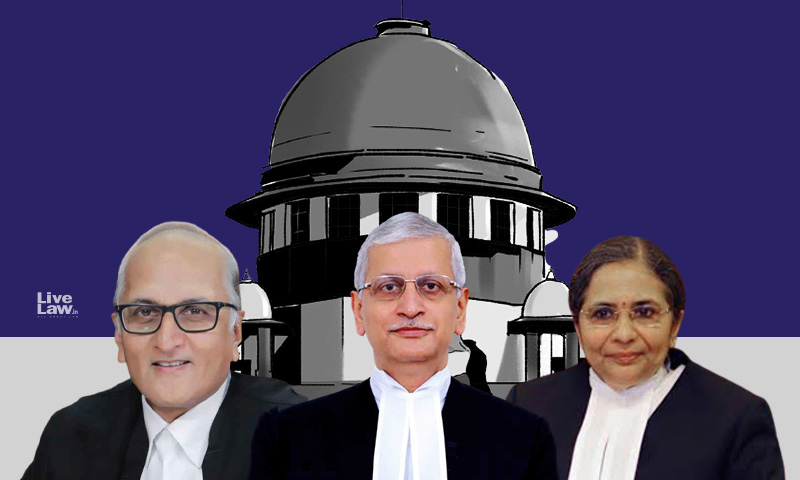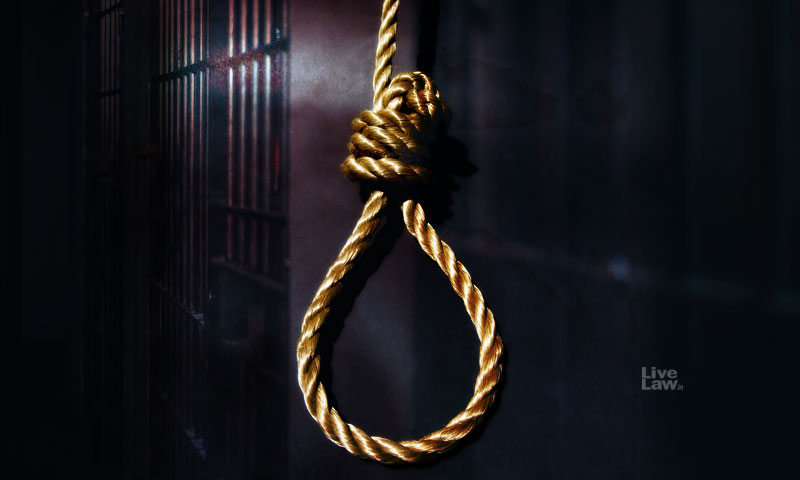- Home
- /
- Top Stories
- /
- No Identification Of Accused,...
No Identification Of Accused, Witnesses Not Cross-Examined : Supreme Court Acquits 3 Men Sentenced To Death, Cites "Glaring Lapses" In Trial
Deepankar Malviya
8 Nov 2022 1:47 PM
"Every case has to be decided by the Courts strictly on merits and in accordance with law without being influenced by any kind of outside moral pressures."
The Supreme Court on Monday acquitted the three people accused of committing murder and rape of a 19-year-old girl in the 2012 Chhawla Gang Rape Case. They were earlier convicted by the trial court and sentenced to death penalty which was ratified by the Delhi High Court on 26th August 2014.The bench of Chief Justice U. U. Lalit and Justices S. Ravindra Bhat and Bela M. Trivedi allowed...
The Supreme Court on Monday acquitted the three people accused of committing murder and rape of a 19-year-old girl in the 2012 Chhawla Gang Rape Case. They were earlier convicted by the trial court and sentenced to death penalty which was ratified by the Delhi High Court on 26th August 2014.
The bench of Chief Justice U. U. Lalit and Justices S. Ravindra Bhat and Bela M. Trivedi allowed the appeals filed by the three accused Rahul, Ravi and Vinod, assailing the judgments of the Delhi High Court. The bench set aside the orders of conviction passed by the trial court and the High Court stating that, "Every case has to be decided by the Courts strictly on merits and in accordance with law without being influenced by any kind of outside moral pressures."
The Supreme Court in the judgment observed that, "As per the settled legal position, in order to sustain conviction, the circumstances taken cumulatively should form a chain so complete that there is no escape from the conclusion that within all human probability, the crime was committed by the accused only and none else. The circumstantial evidence must be complete and incapable of explanation of any other hypothesis than that of the guilt of the accused and such evidence should not only be consistent with the guilt of the accused but should be inconsistent with his innocence."
The Top Court stated that the prosecution was not able to prove the evidences with regard to the arrest of the accused, their identification, discoveries and recoveries of incriminating articles, medical and scientific evidence, the report of DNA profiling and evidences with regard to the CDRs. The Court also observed that there was no Test Identification Parade conducted during the course of investigation, nor were the accused identified by the witness during deposition. The bench further observed that the prosecution had also failed at pointing out the guilt of the Accused and due to the lack of clear and cogent evidences the conviction could not be sustained.
"The prosecution has to bring home the charges levelled against them beyond reasonable doubt, which the prosecution has failed to do in the instant case, resultantly, the Court is left with no alternative but to acquit the accused, though involved in a very heinous crime. It may be true that if the accused involved in the heinous crime go unpunished or are acquitted, a kind of agony and frustration may be caused to the society in general and to the family of the victim in particular, however the law does not permit the Courts to punish the accused on the basis of moral conviction or on suspicion alone. No conviction should be based merely on the apprehension of indictment or condemnation over the decision rendered", the Court said in its judgment.
The Top Court also stated in the judgment that, there were many glaring lapses during the trial of the matter. Out of the total 49 witnesses examined by the prosecution, 10 material witnesses were not cross-examined and many other important witnesses were not cross examined adequately by the defence counsel. The bench also observed that in various decisions the court had repeatedly observed that the judge is supposed to take active participation in the trial and question witnesses, but in the present case the judge played a role of a passive umpire. The Court thus, observed that the lack of cross-examination of the key witnesses and the judge playing the role of passive umpires, the accused were deprived of the rights to have a fair trial.
Senior Advocate Sonia Mathur appeared for one of the accused as an amicus curiae. Senior Advocate A Sirajudeen appeared for another accused. Additional Solicitor General Aishwarya Bhati appeared for the State.
FACTS OF THE CASE
The victim, a 19-year-old girl was abducted near Hanuman Chowk, Qutub Vihar, Chhawla on 9th February at about 9 o' clock at the night while she was returning from her work at DLF Gurgaon along with her friends. On the basis of the statements of her friends who were along with her, an FIR was registered under section 363 of the IPC and investigation commenced. According to the police, the accused Rahul was arrested first and on his confession, his brother Ravi and one Vinod was also arrested. The police claimed that the accused confessed of committing rape, killing the girl and throwing the body in fields ahead of Jhajjar. The body of the victim was recovered from Mustard fields near Karawara Morel.
Upon completion of the investigation a chargesheet was filed and upon committal of the case to the court of sessions charges under sections 365 (Kidnapping or abducting with intent secretly and wrongfully to confine person), 367 (Kidnapping or abducting in order to subject person to grievous hurt, slavery, etc), 376(2)(g) (Gang Rape), 377 (Unnatural Offences), 302 (Punishment for murder) and 201 (Causing disappearance of evidence of offence or giving false information to screen offender) read along with Section 34 (Acts done by several persons in furtherance of common intention). The trial court convicted the accused and gave them death penalty which was ratified by the High Court.
Case Title: Rahul vs State of Delhi Ministry of Home Affairs and Anr – Crl. A. No. 611/2022
Citation : 2022 LiveLaw (SC) 926
Death Penalty - Supreme Court acquits three persons who were sentenced to death by the trial court and the High Court for rape and murder of a 19-year old girl- Supreme Court notes lapses in investigation and trial - No Test Identification of accused done- Accused no identified during trial by witnesses- many witnesses no cross-examined- recoveries not proved [Paras 32-34]
Death Penalty -It may be true that if the accused involved in the heinous crime go unpunished or are acquitted, a kind of agony and frustration may be caused to the society in general and to the family of the victim in particular, however the law does not permit the Courts to punish the accused on the basis of moral conviction or on suspicion alone. No conviction should be based merely on the apprehension of indictment or condemnation over the decision rendered.Every case has to be decided by the Courts strictly on merits and in accordance with law without being influenced by any kind of outside moral pressures.
Circumstantial Evidence -In order to sustain conviction, the circumstances taken cumulatively should form a chain so complete that there is no escape from the conclusion that within all human probability, the crime was committed by the accused only and none else. The circumstantial evidence must be complete and incapable of explanation of any other hypothesis than that of the guilt of the accused and such evidence should not only be consistent with the guilt of the accused but should be inconsistent with his innocence [Para 33]
Indian Evidence Act - Section 165- Section 165 of the Indian Evidence Act confers unbridled powers upon the trial courts to put any question at any stage to the witnesses to elicit the truth. The Judge is not expected to be a passive umpire but issupposed to actively participate in the trial, and to question the witnesses to reach to a correct conclusion [Para 34]
Click Here To Read/Download Judgment
Next Story


